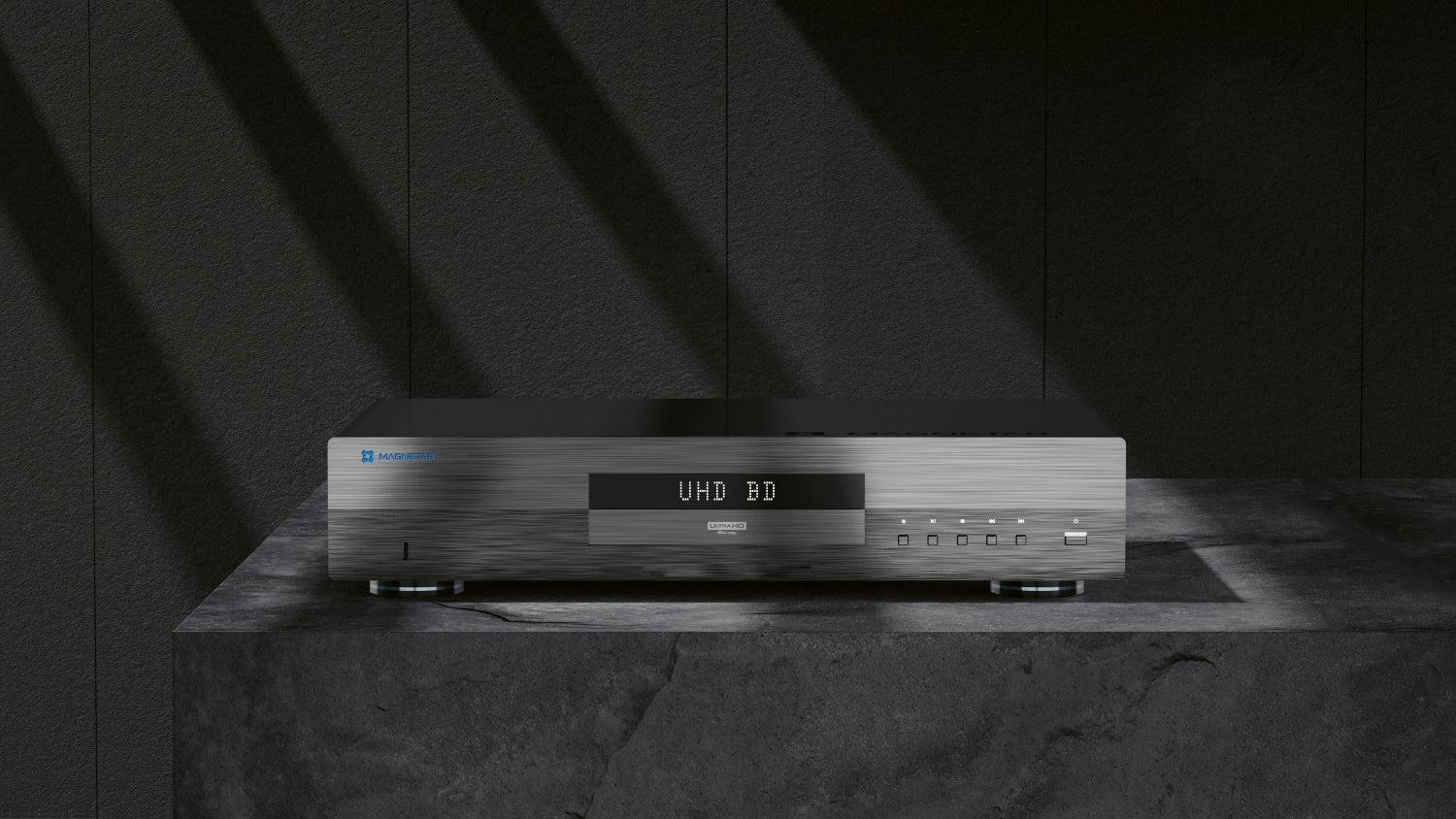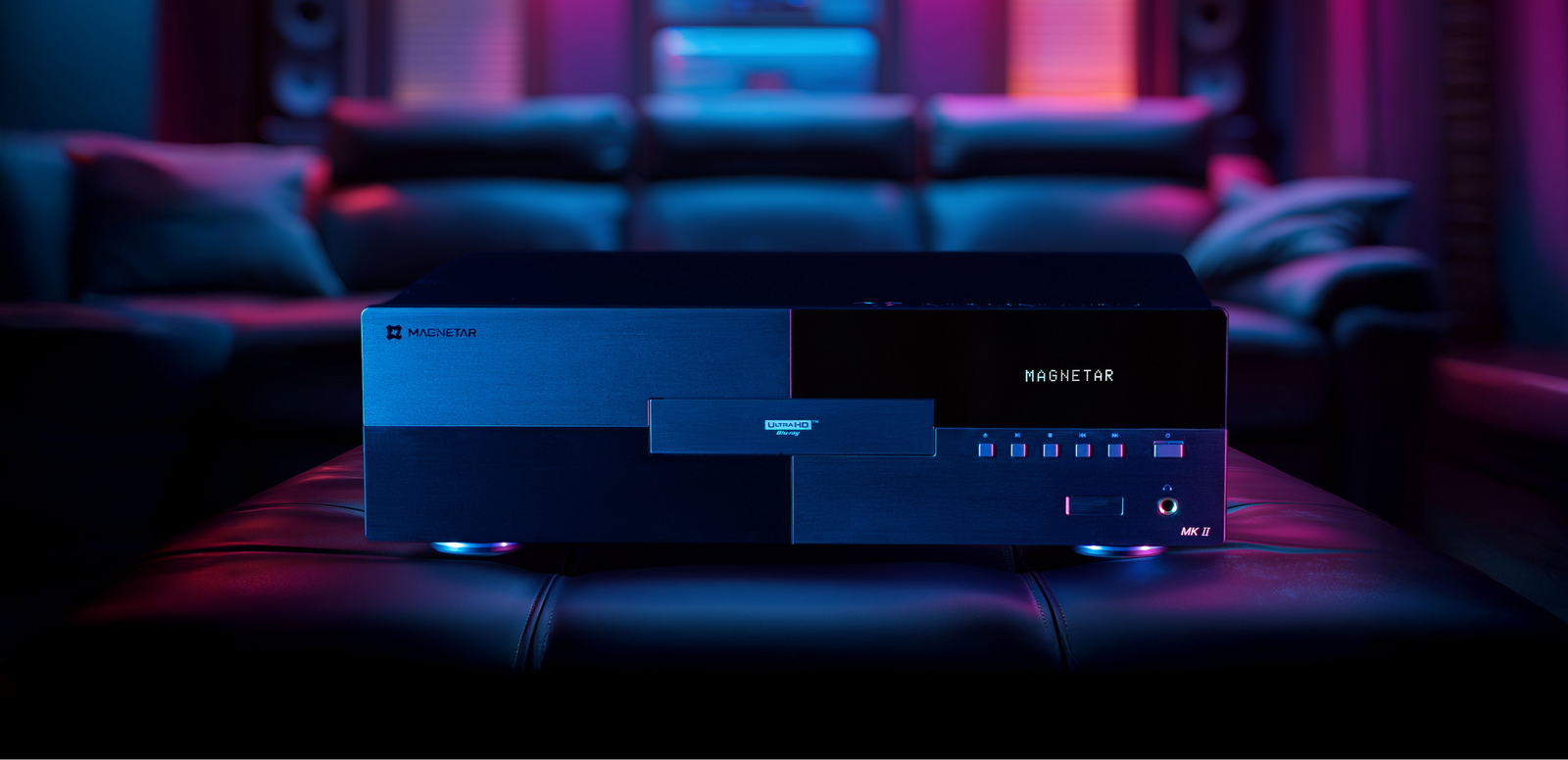Unveiling the secrets of how your favorite films become stunning 4K home theater experiences.

Introduction: The Journey from Set to Shelf
You press play on your Ultra HD Blu-ray player, and the screen explodes to life in brilliant 4K clarity. But have you ever wondered what it takes to bring that film to your home theater in such pristine detail?
The process of mastering a movie for Ultra HD Blu-ray is nothing short of an art form—and a science. From color grading and high-bitrate encoding to Dolby Vision and lossless audio, every element is fine-tuned for maximum impact. Today, we’re peeling back the curtain on that journey—and revealing why having a reference-quality player like Magnetar makes all the difference in experiencing it to its fullest.
1. Film Elements and Scanning: It All Starts with Resolution
Movies shot on film or high-end digital cameras are typically captured at resolutions higher than standard 1080p. For Ultra HD Blu-ray (which outputs at 3840x2160), older films must be rescanned from the original camera negatives—often at 4K or even 8K resolution—to maintain detail.
Newer productions already shot in 4K or higher will skip the scanning process but still undergo rigorous post-production to prepare for disc. It’s here that the source quality becomes critical—the better the scan or original footage, the better the UHD Blu-ray will look.
⸻
2. Color Grading and HDR: Painting with Light
Once the footage is digitized, it’s color graded by a team of colorists and cinematographers who set the film’s final look. For Ultra HD Blu-ray, this includes High Dynamic Range (HDR) grading in formats like HDR10, HDR10+, or Dolby Vision.
HDR allows for deeper blacks, brighter highlights, and a wider range of color, making images pop with lifelike brilliance. But not all HDR is created equal—Dolby Vision, for example, features dynamic metadata for scene-by-scene accuracy.
Magnetar players support HDR10, HDR10+, and Dolby Vision, ensuring viewers experience the film exactly as the filmmakers intended, without compromise.
⸻
3. Compression & Bitrates: Preserving Every Pixel
Streaming services rely on aggressive compression to deliver content over the internet, often sacrificing detail in dark scenes or fast motion. Ultra HD Blu-ray, on the other hand, supports bitrates up to 128 Mbps, with most discs averaging 60–100 Mbps.
During mastering, the film is compressed using HEVC (H.265), a codec designed for high-efficiency encoding of 4K content. This step is crucial: a skilled encoder must balance file size with visual integrity, ensuring every nuance of the image is preserved.
With a high-end player likeMagnetar, playback remains smooth and artifact-free—even during the most demanding sequences—thanks to robust decoding hardware and premium build quality.
⸻
4. Audio Mastering: Lossless Sound You Can Feel
Beyond the picture, Ultra HD Blu-ray excels in audio quality. Discs can carry lossless audio formats like Dolby TrueHD, DTS-HD Master Audio, and Dolby Atmos, all of which provide uncompressed, studio-level sound.
During mastering, these soundtracks are carefully mixed and balanced. For immersive formats like Atmos or DTS:X, audio engineers must map effects in 3D space—placing sounds above, around, and behind you for a true cinematic experience.
Where streaming often downmixes or compresses these tracks, physical media ensures you hear every whisper, explosion, and musical cue as intended. With Magnetar’s dedicated analog circuitry and audiophile-grade components, the sound is not just heard—it’s felt.
⸻
5. Menus, Extras, and Authoring: The Final Touches
Before a disc is pressed, it undergoes authoring—the process of assembling the final product, complete with interactive menus, bonus features, commentary tracks, and subtitles.
Boutique labels and major studios alike pour attention into these elements, giving collectors rich content that goes far beyond the film. Some even include alternate cuts or restored versions.
This is whereMagnetar’s precision navigation shines. Whether you’re exploring branching paths in a director’s cut or scanning frame-by-frame through bonus scenes, the UI remains responsive, elegant, and intuitive.
⸻
6. Disc Replication and Quality Control
After mastering and authoring, the final image is sent to a replication plant. Using stamper molds, thousands of discs are pressed, printed, and packaged.
Quality control is critical here. Errors in stamping, layer bonding, or surface coating can result in playback issues. Studios work with experienced replication partners to ensure fidelity across every unit produced.
Magnetar players are designed to read even the most complex or layered discs with stability and ease, thanks to industrial-grade disc loaders and anti-vibration mechanisms that keep performance flawless.
⸻
7. Why a Reference Player Like Magnetar Matters
Even the most beautifully mastered disc can fall short if the playback hardware doesn’t rise to the occasion. That’s where Magnetar players distinguish themselves:
• Precision DACs for audiophile sound
• Support for every HDR format
• Heavy-duty construction to minimize vibration
• Low-noise power supplies for clean signal paths
• Universal playback for Blu-ray, DVD, CD, SACD, and more
When you combine expertly mastered discs with a reference-grade player, you unlock the true potential of the Ultra HD Blu-ray format.
Conclusion: The Art Behind the Image
Mastering a movie for Ultra HD Blu-ray is more than a technical process—it’s a labor of love. It’s the difference between watching a film and experiencing it. For cinephiles, collectors, and home theater enthusiasts, every frame and every note matters.
And when you pair that artistry with a player designed to honor it—like Magnetar—you create a home theater experience that’s simply unmatched.





